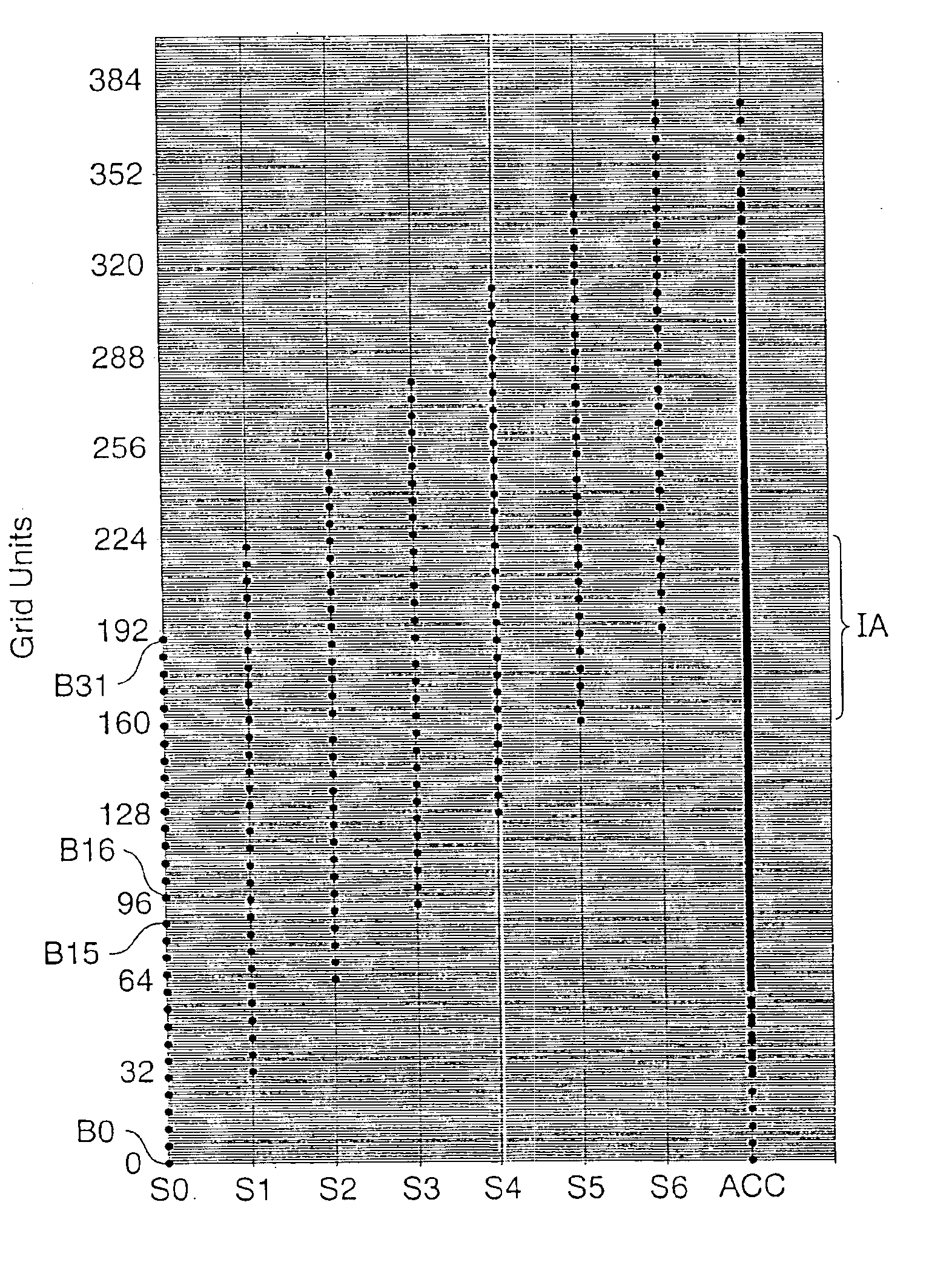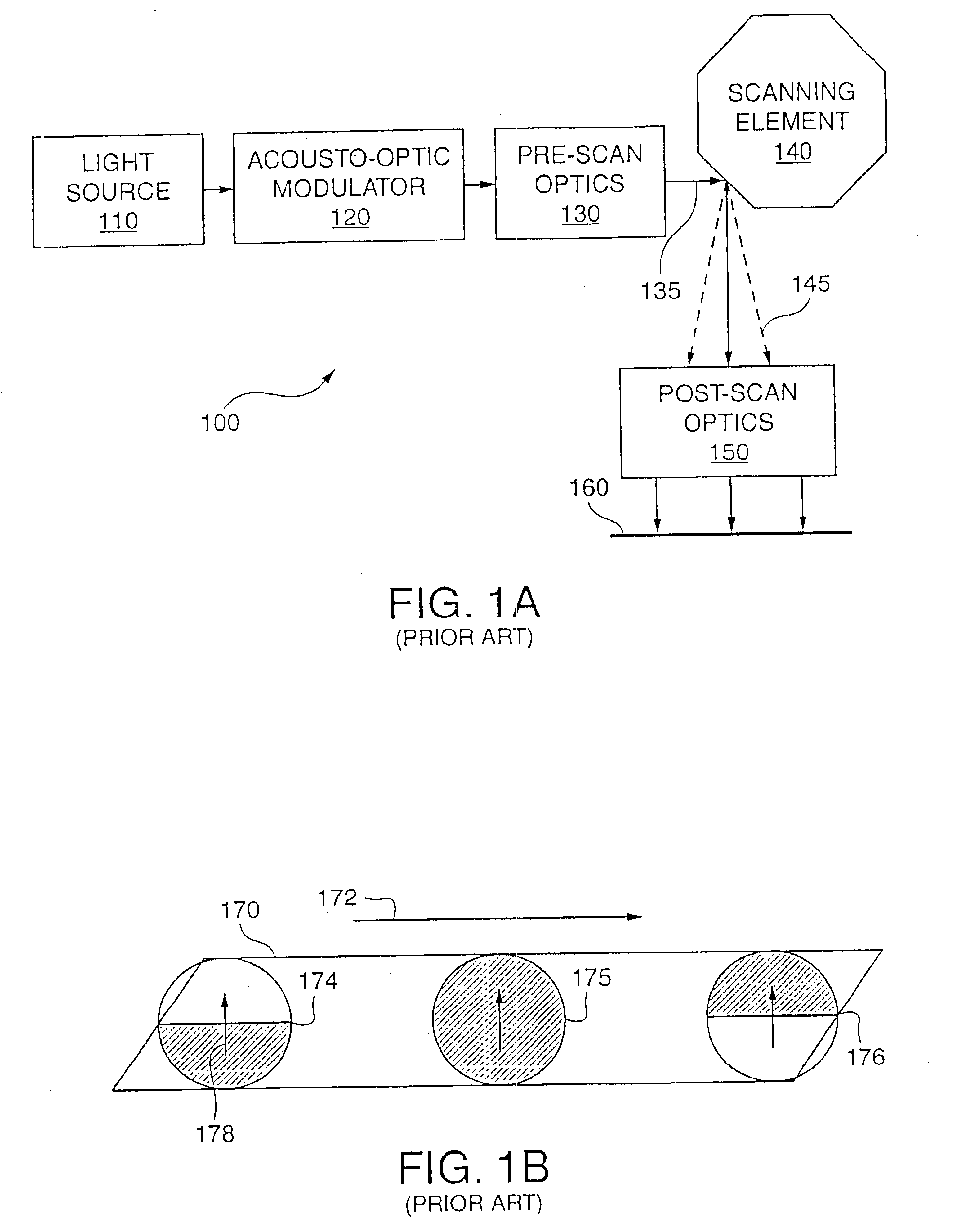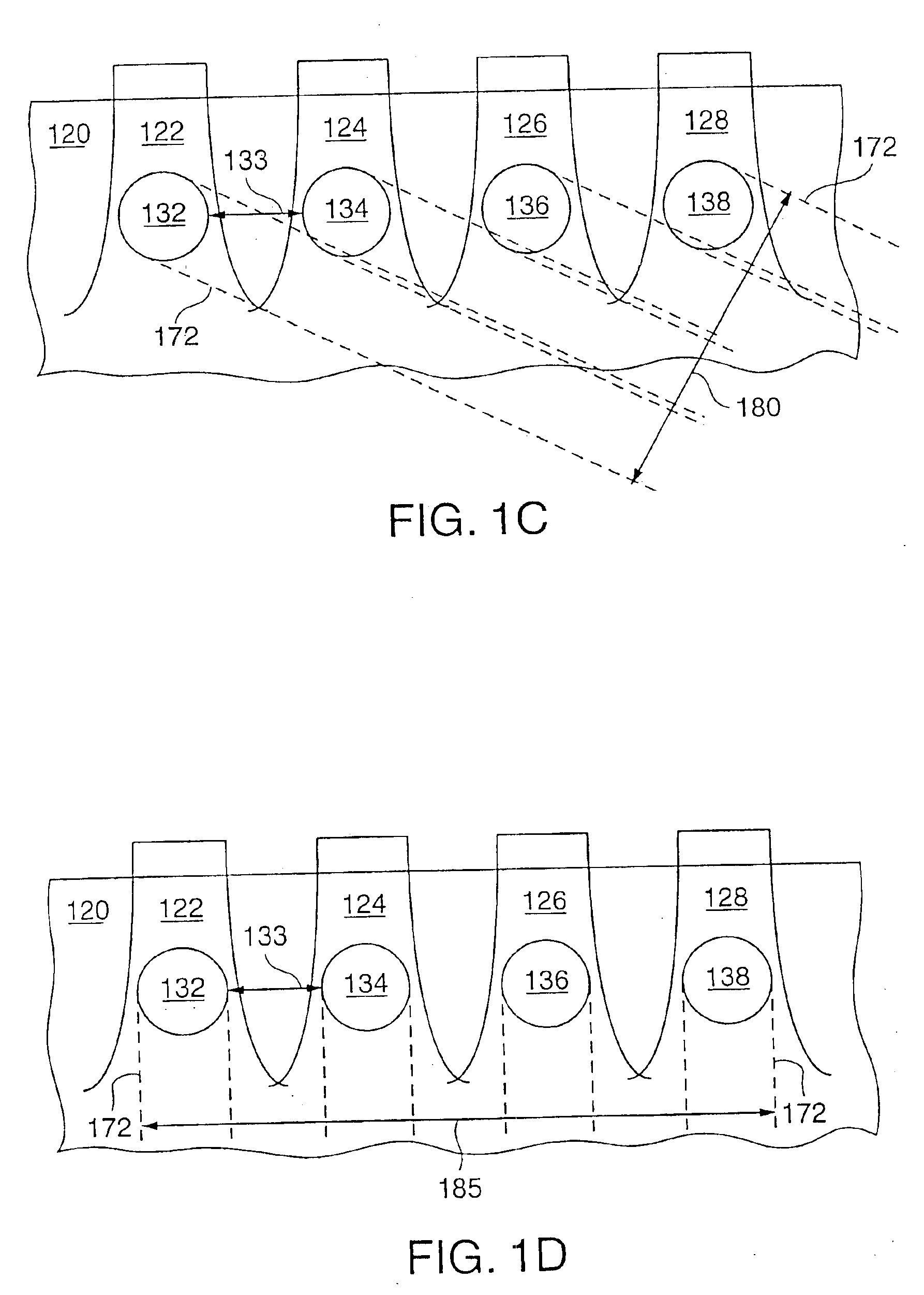Scanning brush and method of use
a scanning brush and scanning method technology, applied in the field of scanning brush and scanning method, can solve the problems of reducing the sharpness at the edges of the image, affecting the accuracy of integrated circuit applications, and affecting the accuracy of scanning beams, so as to improve the sharpness of scanning lines, avoid skew, and minimize the effect of scanning line bow
- Summary
- Abstract
- Description
- Claims
- Application Information
AI Technical Summary
Benefits of technology
Problems solved by technology
Method used
Image
Examples
Embodiment Construction
[0025]In accordance with an aspect of the invention, a precision printing system employs a scanner and multiple scan beams arranged in a wide scan brush with separations between individual beams. An acousto-optic modulator or deflector in the printing system controls the intensities of individual scan beams using acoustic waves oriented along the scan direction. Accordingly, as the acousto-optic modulator turns a beam on or off, successive portions of a scan beam cross-section brighten or darken along the direction of propagation of the scan lines. The printing system uses a scan lens such as an f-sin θ scan lens that reduces scan line bow caused by the width of the scan brush, and a timing generator that generates a pixel clock signal with a variable period to compensate for variations in the velocity of scan beams.
[0026]FIG. 2 shows a precision printing system 200 that employs scanning in accordance with an embodiment of the invention. A pre-scan portion of system 200 includes a b...
PUM
| Property | Measurement | Unit |
|---|---|---|
| power | aaaaa | aaaaa |
| size | aaaaa | aaaaa |
| size | aaaaa | aaaaa |
Abstract
Description
Claims
Application Information
 Login to View More
Login to View More - R&D
- Intellectual Property
- Life Sciences
- Materials
- Tech Scout
- Unparalleled Data Quality
- Higher Quality Content
- 60% Fewer Hallucinations
Browse by: Latest US Patents, China's latest patents, Technical Efficacy Thesaurus, Application Domain, Technology Topic, Popular Technical Reports.
© 2025 PatSnap. All rights reserved.Legal|Privacy policy|Modern Slavery Act Transparency Statement|Sitemap|About US| Contact US: help@patsnap.com



